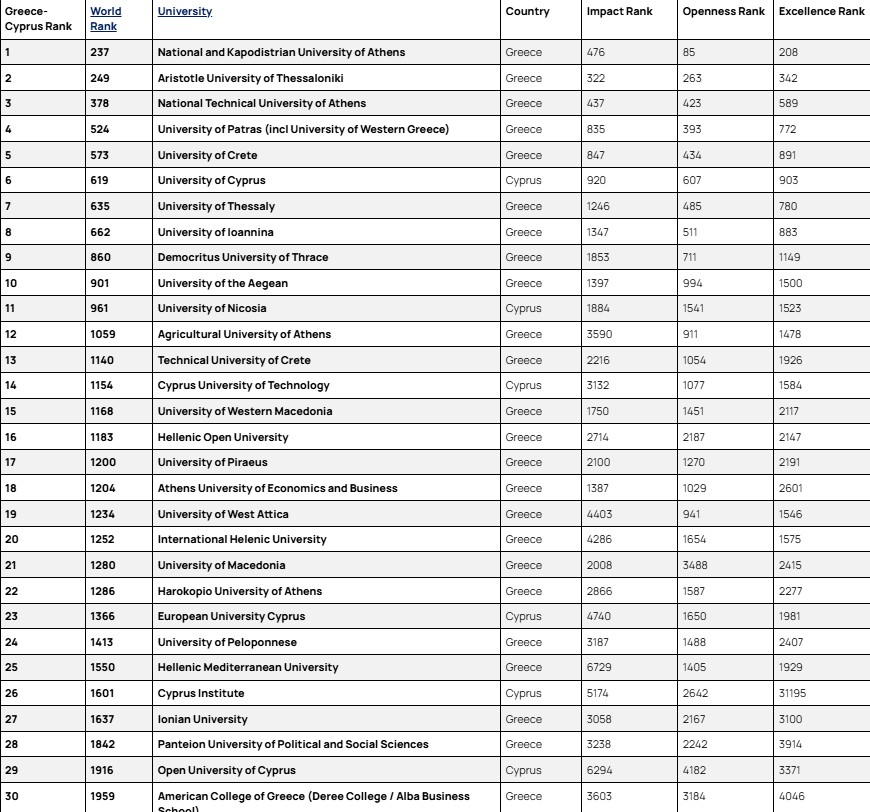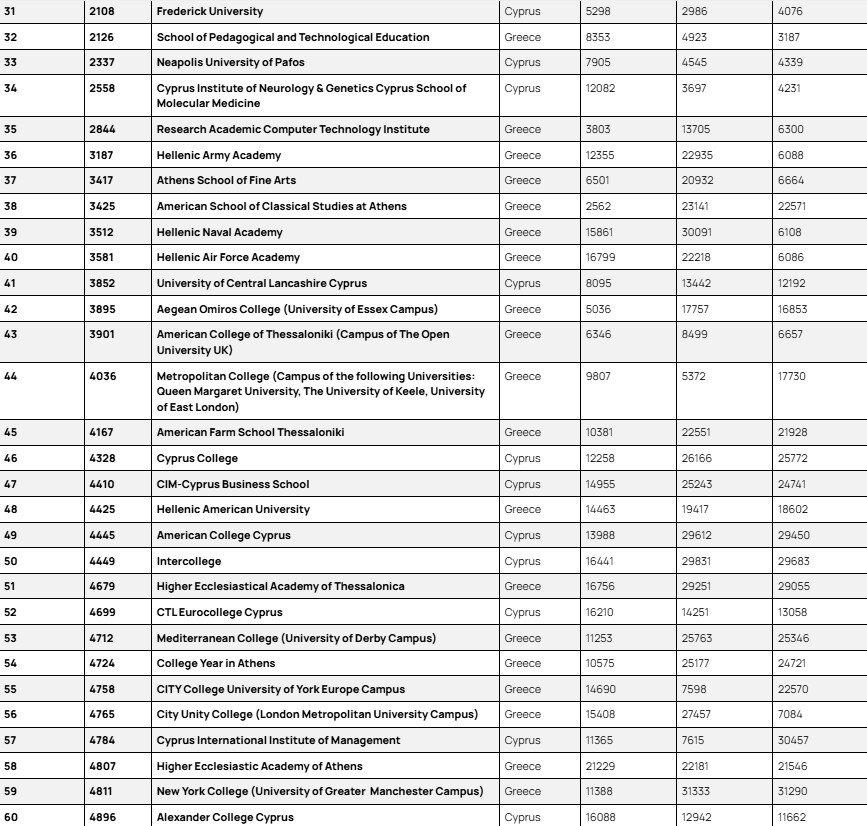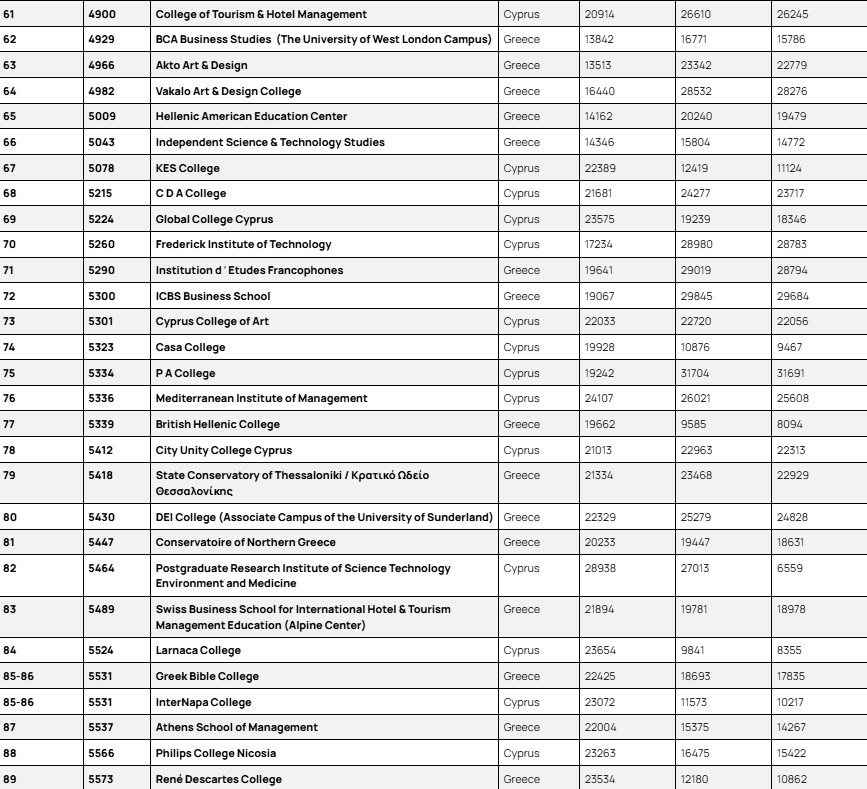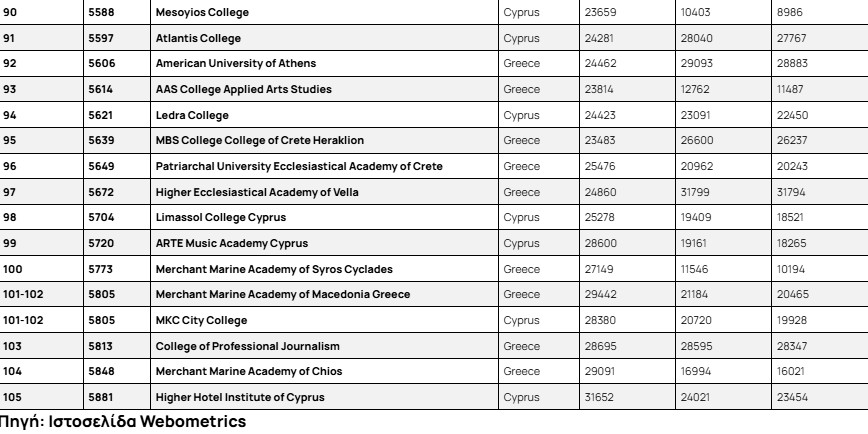The global “Webometrics Ranking Web of Universities” has been published, and according to the ranking results, the National and Kapodistrian University of Athens (NKUA) ranks 237th globally among 32,000 universities and holds 1st place in Greece and Cyprus among the 105 Greek and Cypriot universities and higher education providers included in the ranking. Based on the ranking results, following the National and Kapodistrian University of Athens are Aristotle University of Thessaloniki at position 249, National Technical University of Athens at position 378, while the top five is completed by the University of Patras at position 524 and the University of Crete at position 573. The first Cypriot university, the University of Cyprus, ranks 619th globally (see table 1).
Table 1: Greek and Cypriot Universities and Higher Education Institutions according to the WEBOMETRICS ranking for 2025 (2nd semester)




This particular ranking, which this year marks 22 years of presence in global university rankings, is compiled by Cybermetrics (CCHS), a unit of the Spanish National Research Council (CSIC), Spain’s main research institution. It provides information on more than 32,000 universities from 200 countries, according to their internet presence and the impact of their research work. Universities are ranked based on criteria that mainly concern their presence and popularity on the world wide web, the impact of their research work as reflected in the total number of citations of articles and publications by their professors and researchers, as well as the percentage of their publications that fall within the top 10% of the most “read” and significant publications worldwide.
It is considered one of the most credible ranking tables globally because it is based on data directly verifiable on the internet, rather than indicators that largely rely on interviews, questionnaires, and “opinion surveys” which in some cases may be affected by bias or subjectivity. The basic principle of this particular ranking is that in today’s era, the majority of an academic institution’s most important activities should be reflected on the world wide web. The ranking has been published for the 23rd year since 2004, and is updated twice a year every January and July.
Each university’s ranking is based on the following three criteria:
- Impact – Visibility 50%: Content quality is evaluated by its popularity, i.e., by the number of external networks (subnets) that link to the institution’s web pages (normalized and then the maximum value is selected). Content popularity is considered to recognize the institution’s value, its academic performance, the value and utility of the published information or service provided by the institution.
- Open Scientific Content (Transparency or Openness) 10%. The institution’s participation in the open scientific standards of the world wide web is evaluated through the number of documents catalogued in Google Scholar and the number of citations to them. Practically, the study of citations is considered the most valid criterion for assessing a university’s scientific-research work. The number of citations and consequently each university’s score is calculated from the sum of citations of the top 310 professor and researcher profiles of the university minus the citations of the top twenty profiles.
- Excellence (or Scholar) 40%. Percentage of the institution’s publications in the top 10% of most cited publications in each scientific field. This indicator comes from Scopus and SCImago and includes data from the five-year period 2019-2023 across 27 different scientific fields.




